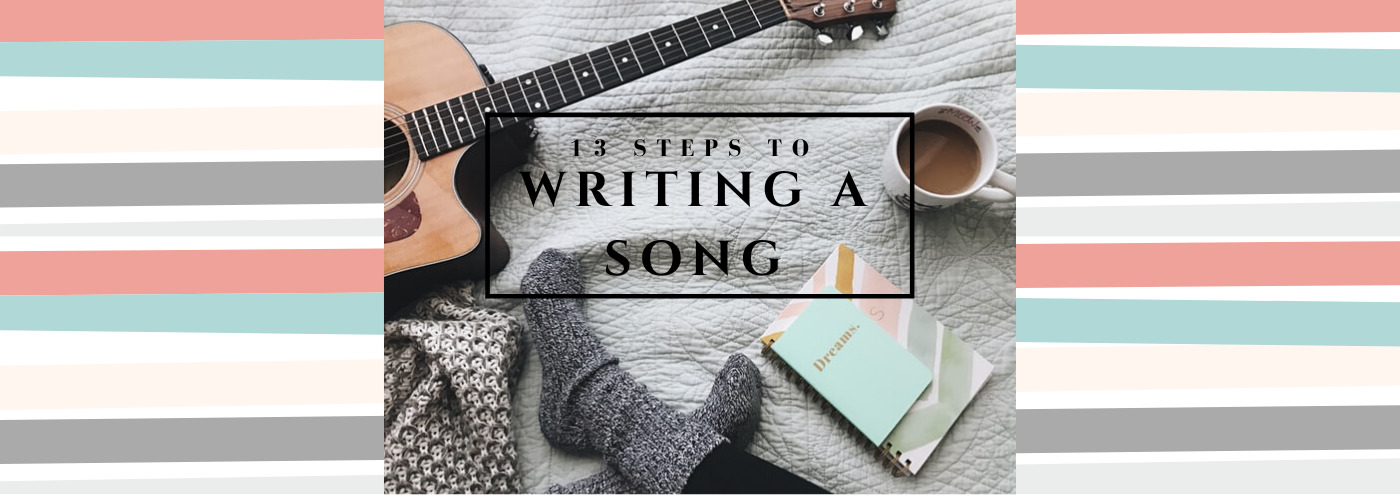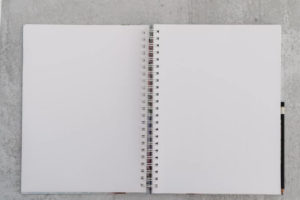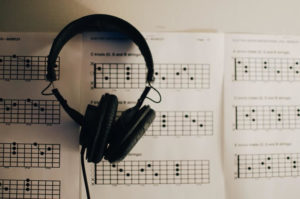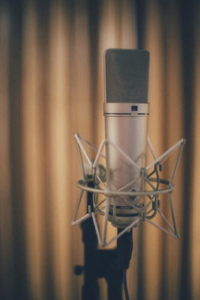
The heart and soul of the music industry is great songs. So, that’s the first thing you need if you want to have a successful career as an artist. Unfortunately, the steps of writing a song can be intimidating to the beginner musician.
How do you write a song? How do you start? How can you make it sound good?????????
— ????????????-???????????????????????? (@SenDraws_32) November 23, 2019
Although you could certainly work with songwriters to compose music for you, many people wish to have at least some hand in the music they perform. However, if you’ve never written any music before, you’ll probably find yourself questioning where to start and wondering what really makes a great song.
At Sundown Sessions Studio we’ve heard hundreds of fantastic songs. After picking up tips from some of the greatest songwriters to cross our path, we’ve assembled this guide for songwriters who are just getting started.
Below you’ll find some of our top steps to writing a song, from conception to recording and beyond:
- 1. Find Inspiration
- 2. Choose Your Structure
- 3. Learn Some Chord Progressions
- 4. Come Up With Your Hook
- 5. Write a Chorus
- 6. Expand In The Verses
- 7. Melody or Lyrics First?
- 8. Add A Bridge
- 9. Clean Things Up
- 10. Share It and Receive Feedback
- 11. Perform It Live and Edit It Even More
- 12. Record Your Song
- 13. Get Your Song Heard
1. Find Inspiration
One of the hardest steps to writing a song is just finding something worthwhile to write about. There really are no limits when it comes to songwriting, so you can write about whatever you’d like.

While this flexibility may be freeing, it can actually limit you, when you sit down to write a song and can’t decide where to start.
You may choose to write about something you’ve experienced first or second hand. Oftentimes, songwriters find inspiration from books, movies or poetry. Maybe there’s a character or aspect of a story that stands out to you and you’d like to expand upon it. World events are also a great way to find inspiration that’s relevant and impactful.
Finally, the most popular type of song is a love song, because they’re universally relatable and easy to craft. So, it makes a great starting topic if you’re having trouble choosing something.
Many people choose to wait for inspiration to hit before they begin writing, while others find that sitting down and writing a song regardless of inspiration is a much better tactic. Both are valid approaches and the important thing is that you find a method that works for you.
For more tips on finding inspiration, check out our guide to overcoming songwriters block.
2. Choose Your Structure

Having a sense of what your songs structure is going to be can really aid in the songwriting process. This is especially true for the beginner songwriter, as it can serve as a road map to guide you through things.
First, you need to decide is the overall structure of the entire song. That is to say, how many verses, choruses and whether or not there will be a bridge, pre-chorus etc.
We won’t dig too deep into the different types of song structures out there. However, you can learn more in this guide of popular song structures. Nothing’s set in stone of course and you may discover down the line that the ideal format changes.
In breaking things down even further, you must also decide on the structure of your rhyming scheme within each section.
Although the rhyming scheme can change between different sections such as the chorus and the verse, it should remain the same for repeated sections. That is to say, that the first verse should follow the same rhyming scheme as the second verse.
This is not a set in stone rule, but it’s a useful recommendation when you’re starting out. Keeping the structure consistent gives a predictability that’s appealing and memorable to the listener.
3. Learn Some Chord Progressions

From a musical perspective, all songs revolve around chord progressions. So, an important step to writing a song is deciding what progressions fit the verses, chorus, bridge etc.
Interestingly enough, many songs revolve around the same few chord progressions. So, don’t be concerned with writing a progression that’s unique to your song.
In fact, many of the most successful pop songs over the last few decades utilize the exact same four chords. You’ve probably seen the video below by the band Axis of Awesome, that sheds light on this in an amusing way.
So, if you’re searching for a progression for the song you’re writing, the pattern of I, V, vi, IV, from the video above may be one of the best places to start. The video below delves into exactly what this means and teaches some other useful progressions for your songwriting.
4. Come Up With Your Hook

One step that most amateurs brush over when first writing a song is the importance of a well crafted hook. All popular songs have one and it has a major bearing over the success rate of a piece of music.
A hook is the most memorable part of a piece of music. It can be a line or two, with lyrics or a unique melody played by a lead instrument.
In any regard, it’s the part of a song that follows people around throughout their day or what they end up singing to their friends when they’re trying to describe it. It usually captures the overall message or mood of a song and it is hard to forget.
5. Write a Chorus

This step is very much like writing the thesis to your song. The chorus is where you get to the point of the whole song or whatever message you want your listeners to walk away with after listening to it.
Depending on the context of the song, it doesn’t need to be complex, nor does it have to come to any huge realization. However, it should be well thought out and easy to digest.
Although some choruses can change from verse to verse, they should stay relatively similar. The best chorus is something the listener can quickly latch onto and sing along with by the second or third time it comes around.
6. Expand In The Verses
The verses are the step in songwriting where you fill in the gaps that a chorus is missing. You can use them to fully flesh out and develop the story from start to finish.
How many verses you write, really depends on how long you need to get your point across. However, two to four verses is the recommended amount.
A typical three verse song will introduce the characters and conflict in the first verse. The second verse expands on this and offers further detail that may be beneficial to a listener’s perspective. Finally, in the third verse you reach a conclusion or find a way to resolve things in a satisfying fashion.
Regardless of the number of verses you’re writing, the steps to creating an appealing arch in your song’s plot stay the same.
7. Melody or Lyrics First?

There’s a fair amount of debate amongst songwriters as to whether or not it’s better to write the lyrics or music first. However, in my opinion, there’s really no right or wrong approach to this step of the songwriting process.
It really comes down to personal preference and where the inspiration first strikes you. If you have a lyrical story that you’d like to flesh out before developing the melody, go with that. On the other hand, you may find that the musical concept comes your way long before the lyrics are in place.
Many people even find that they write the lyrics and melody in tandem, playing off each other. Whatever the approach, the most important thing is that you don’t think too hard about things and work as much as you can while you’re inspired.
There’s plenty of time to clean things up later and filtering things too much at this step can hinder the songwriting process.
8. Add A Bridge
Adding a bridge isn’t always a necessary step to writing a song, but it can be a good idea. This is especially true if the song is feeling a little stagnant or repetitive after the second chorus rolls around.
A bridge allows you to break away from both the lyrical and musical structure of a song. It’s a great opportunity to expand on the story or explore contrasting ideas.
Oftentimes, the bridge forms a realization that leads to a song’s resolution in the following chorus or verse.
The bridge can be one of the easiest parts to write as you have a lot of freedom. As long as it’s in the same key, or at least ends up back in the key of the section that follows, you have free reign to do what you’d like.
9. Clean Things Up

Many beginner songwriters would skip this and the following steps, thinking that creating a song only entails the initial writing process. However, the successful songwriter doesn’t stop here.
Like any written material, songs require editing to really reach their full potential. So, taking the time to go through and refine everything, makes the world of a difference.
However, this is easier said than done and it’s difficult to look at our creations with a critical eye.
This is something all songwriters struggle with. So, I recommend taking at least a few days between the initial conception and the editing stage. Letting things sit can give you a fresh perspective when you revisit the song down the road.
10. Share It and Receive Feedback
As already mentioned, songwriters aren’t the best critic when it comes to noticing imperfections in their work.

So, one of the best ways to help with the editing stage is to show your music to a trusted friend and get their opinion. Finding both a musician and a lay person to play it for can give you some valuable perspective.
The important thing here is to be open to criticism. Positive affirmation, while nice to receive, doesn’t really help a song progress in any way. So, make it clear to whoever you’re playing your song for in this step, that you’re looking for ways to improve the writing.
You don’t need to take every suggestion to heart either. In fact, when someone brings up one issue with your song, it might be a hint at something completely different.
It may not be entirely obvious at first, but overtime you’ll be able to read between the lines of someone’s feedback and understand where the room for improvement lies.
11. Perform It Live and Edit It Even More

The process of rehearsing and performing a song will reveal things that you hadn’t noticed before. Because of this, working your song into a live set at least a few times is a good last step after the writing is complete and before you begin recording it.
Obviously, you want to be comfortable with the song before performing it and you want to know it well. So, don’t break out a song in a show that you had just finished writing the night before.
In the same way you don’t want to perform a song that isn’t fully completed. Think of this as an editing step rather than part of the songwriting process. Over performances, you’ll be surprised at the ways the song develops.
12. Record Your Song
Once you’re finished writing and refining your song, you’ll have reached the recording stage of things. You want to make sure that you get this step right, as it immortalizes your songwriting in a way that will be heard for many years.

Many people think that producing a high quality recording of a song they’ve written has to be an expensive or complex process. However, the rise of online recording studios has done a lot to change this.
Sundown Sessions Studio connects songwriters to award winning session musicians and engineers from around the world. The results are high quality, commercial grade recordings that give your songs an impressive and competitive edge.
Check out our pricing and packages page for more information on how we can help you capture your music in the best possible light.
13. Get Your Song Heard
Writing and recording your song is only half the battle, with the next step being to get it out and into the world.

The key to forming a viable career around the music you compose is through song promotion, gig booking and submitting press kits to avenues of exposure.
Finally, the world of sync is the best route for those who want to start making a large revenue from the music they compose. This is the process of getting your songs placed in film and TV shows.

Although the steps in doing so can be somewhat involved, the payment you receive for the songs you’re writing is well worth the effort. Our sister site, Sync Songwriter, clears the air on this process and teaches songwriters everything they need to know.
Check out this guide on music licensing to learn how you can start making a profit from your compositions.
Once you’re ready to take things to the next level, sign up for The Art of The Song Pitch. Here you’ll learn the secrets that can make or break your career in the world of sync.
Conclusion: Steps To Writing a Song
When you haven’t written a song before, the idea of composing something from start to finish may seem impossible. However, if you break things down into manageable steps you’ll be well on your way to writing song after song in no time.
Many people perceive the writing process to only involve what happens from conception to finish. However, one should also consider the editing and refinement side of things, as well as the recording stage.
To break this guide down, our recommended steps to writing a song are:
- 1. Find Inspiration
- 2. Choose Your Structure
- 3. Learn Some Chord Progressions
- 4. Come Up With Your Hook
- 5. Write a Chorus
- 6. Expand In The Verses
- 7. Melody or Lyrics First?
- 8. Add A Bridge
- 9. Clean Things Up
- 10. Share It and Receive Feedback
- 11. Perform It Live and Edit It Even More
- 12. Record Your Song
- 13. Get Your Song Heard
However, writing a song isn’t always a straight ahead, linear process. With that in mind, you may find yourself jumping around this guide when you’re songwriting and that’s okay. Writing music is all about finding a routine that suits your creative energy.
Be sure to share this guide with your friends and check out the rest of the Sundown Sessions Studio Blog for more tips, tricks and steps to songwriting, home recording and music business.
